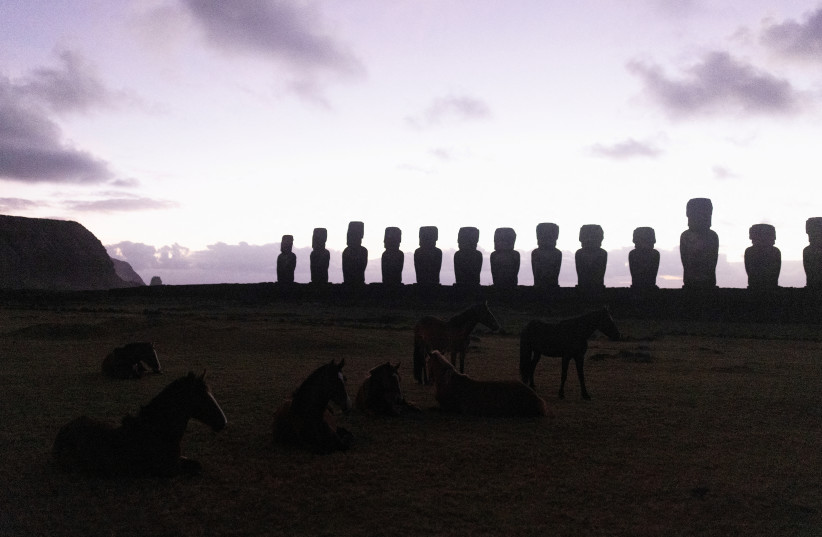A new Easter Island moai statue has been discovered in a drying-up lake in the Rano Raraku volcanic crater on the island by researchers working on marshland restoration, The Guardian reported.
The moai statue is on the shorter side at just 1.6 meters high, but it is still in notably good condition, considering it has been submerged in a lake bed for possibly centuries.
It is also possible that more moai could be in the lake bed too. But just as is the case with all the other maoi statues that dot the island, no one knows how they got there.
The history of Easter Island and the moai statues
Easter Island, known as Rapa Nui by the island's indigenous Polynesian inhabitants, also known as the Rapa Nui people, is a Chilean special territory and is one of the most remote islands in the world.
The island itself is most famous for its moai statues, which are tall monolithic statues containing detailed overly large heads with no legs.
When and how and where the moai were made are not mysteries. They were made by the Rapa Nui people between the 1200s and 1500s and were made at the Rano Raraku volcanic crater and quarry by carving them.
But what is unknown is how some of the nearly 1,000 different moai statues were moved throughout the island, where they were found placed on stone platforms called ahu.
Consider how large these moai were – a 1.6-meter stone statue was considered on the smaller side, after all, with the average being around four meters. Moai statues could weigh over 1,200 kilograms each. And given the technology available to the islanders at the time, exactly how they managed to move them all is a question that has baffled researchers for years, though a number of theories do exist.
Unfortunately, much of the history surrounding this has been lost, especially after the island's population was decimated following the arrival of Europeans and diseases like smallpox.
So what will happen to the moai statue now?
For one thing, the fact that it was found in the Rano Raraku lake bed, which had only started drying up in 2018, could be a sign that there are others lying there too. More research could be done to find them.
But according to the Ma'u Henua Indigenous Community, which administers the Rapa Nui national part where the volcanic lake is located, in a statement obtained by The Guardian, there aren't any plans to move this maoi anytime soon.

